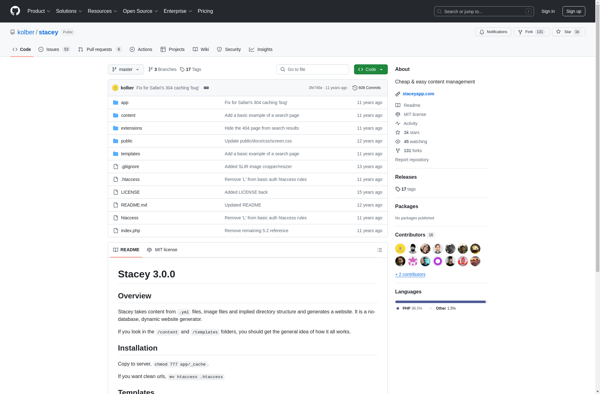Automad

Automad: Open-Source CMS and Website Builder
Automad is an open-source CMS and website builder focused on flexibility and modularity. It allows users to easily build websites, blogs and web applications using modular templates, plugins and custom code snippets.
What is Automad?
Automad is an open-source content management system (CMS) and website builder designed for flexibility, modularity and ease of use. It allows users without coding experience to easily create modern, responsive websites, blogs and web applications.
Key features of Automad include:
- Modular, block-based layout engine that makes it easy to build custom page layouts
- Support for custom content types beyond just pages and posts
- Simple, intuitive template and snippet system for reusable site components
- SEO-friendly URLs and built-in image handling
- Extendable via plugins, which allow adding advanced features like forms, galleries, social media integration and more
- Built-in user roles and permissions system
- Version control integration to track content changes
Automad emphasizes flexibility and developer-friendliness. Developers can fully customize sites with template overrides, custom layouts, plugins and code snippets while content editors get an easy-to-use interface for managing content. The block-based editor is similar to popular page builders but stored as Structured Data instead of shortcodes.
With its focus on modular architecture and developer tools, Automad bills itself as a CMS aimed at developers instead of end users. It gives full code-level control for developers to build custom websites, but retains editor flexibility for those without coding skills.
Automad Features
Features
- Modular template system
- Drag and drop interface
- Customizable with plugins
- Built-in image editor
- SEO and social media optimization
- Responsive design
- Multilingual support
Pricing
- Open Source
Pros
Cons
Official Links
Reviews & Ratings
Login to ReviewThe Best Automad Alternatives
Top Development and Website Builders and other similar apps like Automad
Here are some alternatives to Automad:
Suggest an alternative ❐WordPress

Indexhibit

Drupal

Directus

Joomla

Redaxscript

DEV Community

Berta CMS

TYPO3

Statamic

ImpressPages CMS

Kirby

Django CMS

GetSimple CMS

Flextype

Landing CMS

PhileCMS

Sphido

TidyCMS

Stacey

PieCrust

Portfolio Websites
Roadiz

Drukkar

Joomla Video Plus Theme

Mambo
LotusCMS

Leeflets
TangoCMS

Zotonic
